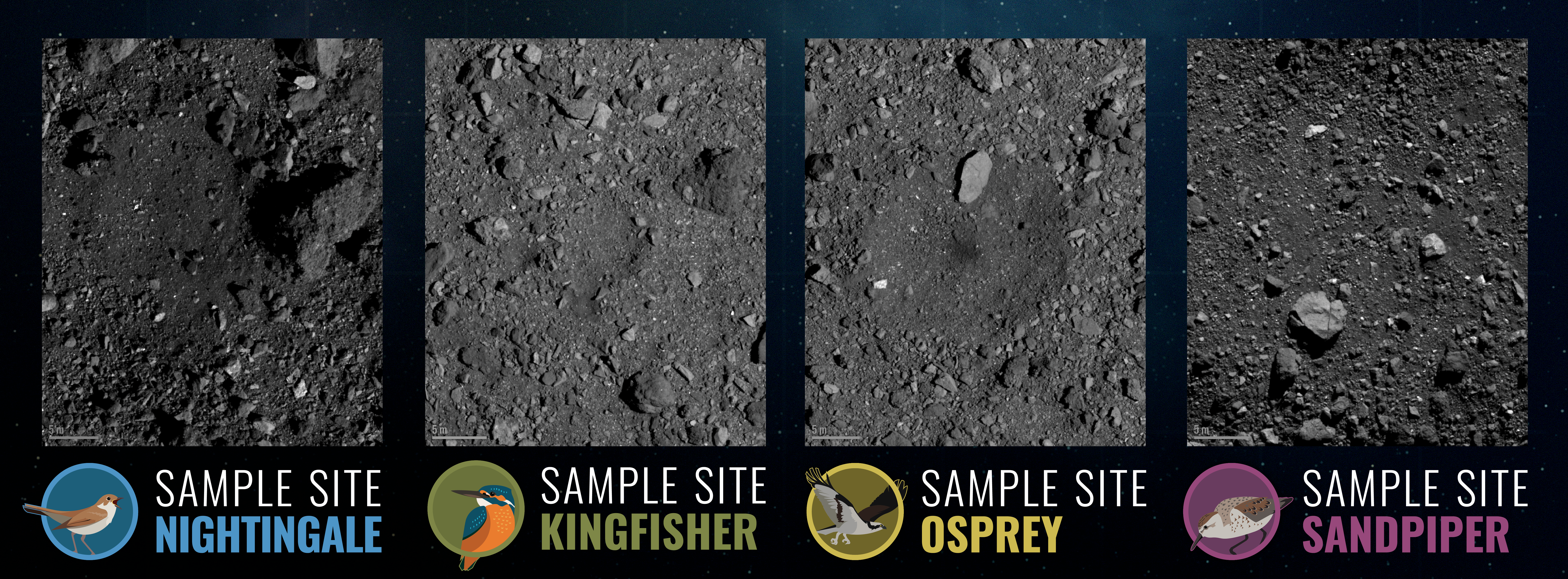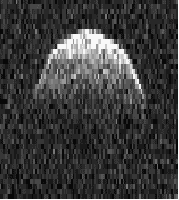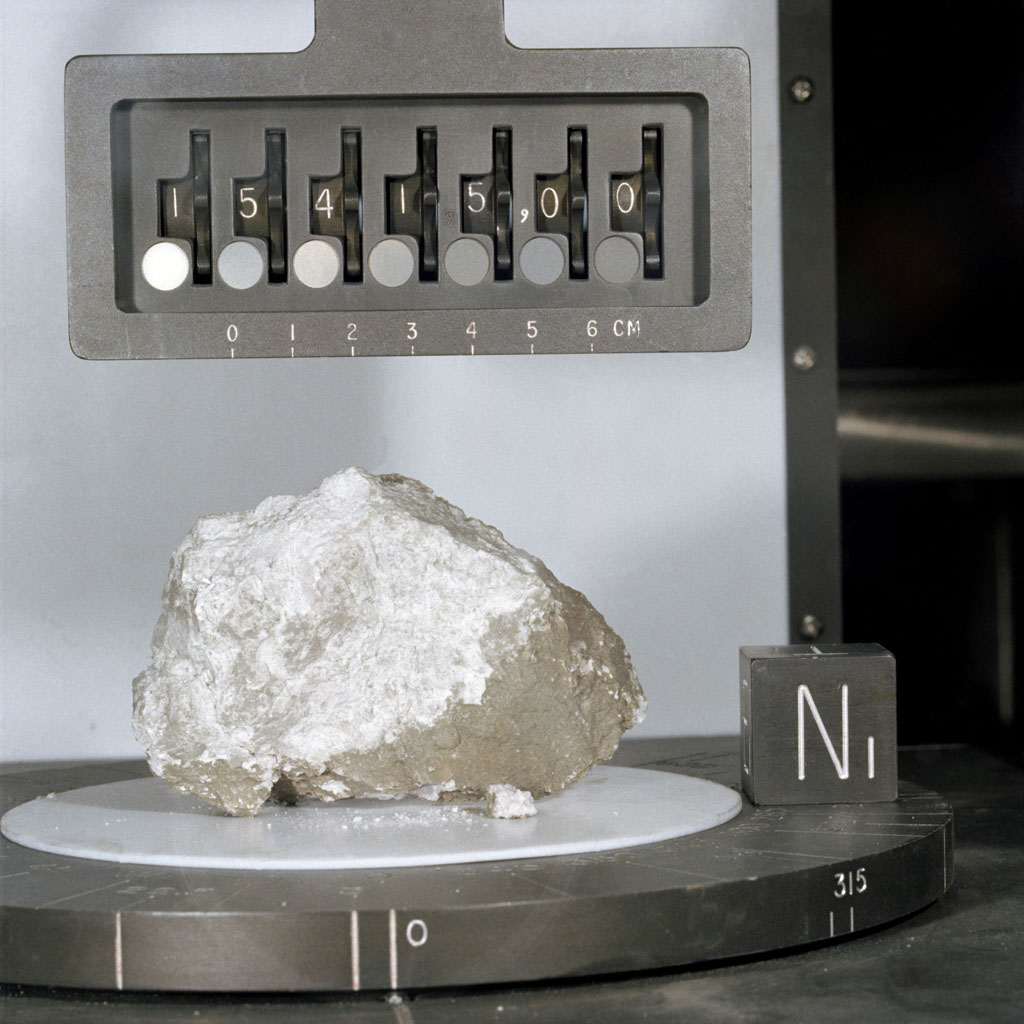|
OSIRIS-REx
OSIRIS-REx was a NASA asteroid-study and sample-return mission that visited and collected samples from 101955 Bennu, a C-type asteroid, carbonaceous near-Earth object, near-Earth asteroid. The material, returned in September 2023, is expected to enable scientists to learn more about the formation and evolution of the Solar System, its initial stages of planet formation, and the source of organic compounds that led to the Abiogenesis, formation of life on Earth. Following the completion of the primary OSIRIS-REx (Regolith Explorer) mission, the spacecraft is planned to conduct a flyby of asteroid 99942 Apophis, renamed as OSIRIS-APEX (Apophis Explorer). OSIRIS-REx was launched on 8 September 2016, flew past Earth on 22 September 2017, and rendezvoused with 101955 Bennu, Bennu on 3 December 2018. It spent the next two years analyzing the surface to find a suitable site from which to extract a sample. On 20 October 2020, OSIRIS-REx touched down on Bennu and s ... [...More Info...] [...Related Items...] OR: [Wikipedia] [Google] [Baidu] |
101955 Bennu
101955 Bennu ( provisional designation ) is a carbonaceous asteroid in the Apollo group discovered by the LINEAR Project on 11 September 1999. It is a potentially hazardous object that is listed on the Sentry Risk Table and has the second highest cumulative rating on the Palermo scale. It has a cumulative 1-in-1,750 chance of impacting Earth between 2178 and 2290 with the greatest risk being on 24 September 2182. It is named after Bennu, the ancient Egyptian mythological bird associated with the Sun, creation, and rebirth. has a mean diameter of and has been observed extensively by the Arecibo Observatory planetary radar and the Goldstone Deep Space Network. Bennu was the target of the OSIRIS-REx mission that returned samples of the asteroid to Earth. The spacecraft, launched in September 2016, arrived at the asteroid two years later and mapped its surface in detail, seeking potential sample collection sites. Analysis of the orbits allowed calculation of Bennu's mass a ... [...More Info...] [...Related Items...] OR: [Wikipedia] [Google] [Baidu] |
TAGSAM
TAGSAM or Touch-and-Go Sample Acquisition Mechanism is a robotic arm on the OSIRIS-REx space probe designed and used for collecting a sample from asteroid 101955 Bennu. OSIRIS-REx was launched in 2016. It arrived at asteroid Bennu in August 2018, and began scientific studies. It collected a sample of the material making up the surface of Bennu in 2020 and returned it to Earth in 2023. Overview TAGSAM is a robotic arm attached to the main body of the spacecraft that collects a sample from the asteroid, and puts the samples into the Earth return vehicle. Bennu is about 500 meters in diameter and has very low gravity, so the arm must perform the collection in near zero gravity, yet still contend with some gravitational forces from the asteroid. One issue with small asteroids is their unique gravitational environment, and Bennu became the smallest body orbited by a spacecraft. TAGSAM was designed to take up to three samples from the asteroid, although in the event the first sample wa ... [...More Info...] [...Related Items...] OR: [Wikipedia] [Google] [Baidu] |
Sample-return Mission
A sample-return mission is a spacecraft mission to collect and return samples from an extraterrestrial location to Earth for analysis. Sample-return missions may bring back merely atoms and molecules or a deposit of complex compounds such as loose material and rocks. These samples may be obtained in a number of ways, such as soil and rock excavation or a collector array used for capturing particles of solar wind or cometary debris. Nonetheless, concerns have been raised that the return of such samples to planet Earth may endanger Earth itself. To date, samples of Moon rock from Earth's Moon have been collected by robotic and crewed missions; the comet Wild 2 and the asteroids 25143 Itokawa, 162173 Ryugu, and 101955 Bennu have been visited by robotic spacecraft which returned samples to Earth; and samples of the solar wind have been returned by the robotic '' Genesis'' mission. In addition to sample-return missions, samples from three identified non-terrestrial bodies have be ... [...More Info...] [...Related Items...] OR: [Wikipedia] [Google] [Baidu] |
99942 Apophis
99942 Apophis ( provisional designation ) is a near-Earth asteroid and a potentially hazardous object, 450 metres (1,480 ft) by 170 metres (560 ft) in size, that caused a brief period of concern in December 2004 when initial observations indicated a probability of 0.027 (2.7%) that it would hit Earth on Friday, April 13, 2029. Additional observations provided improved predictions that eliminated the possibility of an impact on Earth in 2029. A small possibility nevertheless remained that, during its 2029 close encounter with Earth, Apophis would pass through a gravitational keyhole estimated to be 800 metres in diameter, which would have set up a future impact exactly seven years later on Easter Sunday, April 13, 2036. This possibility kept it at Level 1 on the 0 to 10 Torino impact hazard scale until August 2006, when the probability that Apophis would pass through the keyhole was determined to be very small and Apophis's rating on the Torino scale was lowe ... [...More Info...] [...Related Items...] OR: [Wikipedia] [Google] [Baidu] |
New Frontiers Program
The New Frontiers program is a series of space exploration missions being conducted by NASA The National Aeronautics and Space Administration (NASA ) is an independent agencies of the United States government, independent agency of the federal government of the United States, US federal government responsible for the United States ... with the purpose of furthering the understanding of the Solar System. The program selects medium-class missions which can provide high science returns. NASA is encouraging both domestic and international scientists to submit mission proposals for the program. New Frontiers was built on the innovative approach used by the Discovery Program, Discovery and Explorer program, Explorer Programs of principal investigator-led missions. It is designed for medium-class missions that cannot be accomplished within the cost and time constraints of Discovery, but are not as large as Large Strategic Science Missions (Flagship missions). There are curren ... [...More Info...] [...Related Items...] OR: [Wikipedia] [Google] [Baidu] |
Atlas V
Atlas V is an expendable launch system and the fifth major version in the Atlas (rocket family), Atlas launch vehicle family. It was developed by Lockheed Martin and has been operated by United Launch Alliance (ULA) since 2006. Primarily used to launch payloads for the United States Department of Defense, NASA, and commercial customers, Atlas V is the longest-serving active rocket in the United States. Each Atlas V vehicle consists of two main stages. The First stage (rocketry), first stage is powered by a single Russian-made RD-180 engine that burns kerosene and liquid oxygen. The Centaur (rocket stage), Centaur upper stage uses one or two American-made Aerojet Rocketdyne RL10 engines that burn liquid hydrogen and liquid oxygen. Strap-on booster, Strap-on Solid rocket booster, solid rocket boosters (SRBs) are used in several configurations. Originally equipped with AJ-60A SRBs, the vehicle switched to Graphite-Epoxy Motor (GEM 63) boosters beginning in November 2020, except for ... [...More Info...] [...Related Items...] OR: [Wikipedia] [Google] [Baidu] |
Near-Earth Object
A near-Earth object (NEO) is any small Solar System body orbiting the Sun whose closest approach to the Sun ( perihelion) is less than 1.3 times the Earth–Sun distance (astronomical unit, AU). This definition applies to the object's orbit around the Sun, rather than its current position, thus an object with such an orbit is considered an NEO even at times when it is far from making a close approach of Earth. If an NEO's orbit crosses the Earth's orbit, and the object is larger than across, it is considered a potentially hazardous object (PHO). Most known PHOs and NEOs are asteroids, but about a third of a percent are comets. There are over 37,000 known near-Earth asteroids (NEAs) and over 120 known short-period near-Earth comets (NECs). A number of solar-orbiting meteoroids were large enough to be tracked in space before striking Earth. It is now widely accepted that collisions in the past have had a significant role in shaping the geological and biological history of Ea ... [...More Info...] [...Related Items...] OR: [Wikipedia] [Google] [Baidu] |
NASA
The National Aeronautics and Space Administration (NASA ) is an independent agencies of the United States government, independent agency of the federal government of the United States, US federal government responsible for the United States's civil list of government space agencies, space program, aeronautics research and outer space, space research. National Aeronautics and Space Act, Established in 1958, it succeeded the National Advisory Committee for Aeronautics (NACA) to give the American space development effort a distinct civilian orientation, emphasizing peaceful applications in space science. It has since led most of America's space exploration programs, including Project Mercury, Project Gemini, the 1968–1972 Apollo program missions, the Skylab space station, and the Space Shuttle. Currently, NASA supports the International Space Station (ISS) along with the Commercial Crew Program and oversees the development of the Orion (spacecraft), Orion spacecraft and the Sp ... [...More Info...] [...Related Items...] OR: [Wikipedia] [Google] [Baidu] |
Utah Test And Training Range
The Utah Test and Training Range (UTTR) is a Department of Defense military testing and training area located in Utah's West Desert, approximately west of Salt Lake City, Utah. UTTR is currently the largest contiguous block of over-land supersonic-authorized restricted airspace in the contiguous United States. The range, which has a footprint of of ground space and over of air space — about four-fifths the area of West Virginia—is divided into North and South ranges. Interstate 80 passes through a wide gap between the two sections of the range. The site is administered and maintained by the United States Air Force (USAF) HQ UTTR, formerly known as the 388th Range Squadron (388RANS) stationed at Hill Air Force Base, Utah. The East and West areas of the Dugway Proving Ground are contiguous with the South Area of the UTTR. History The Wendover Army Air Field was created in 1942 for research and training, with testing of Republic-Ford JB-2 (U.S. copy of the V-1 flying bomb) i ... [...More Info...] [...Related Items...] OR: [Wikipedia] [Google] [Baidu] |
United Launch Alliance
United Launch Alliance, LLC (ULA) is an American launch service provider formed in December 2006 as a joint venture between Lockheed Martin Space and Boeing Defense, Space & Security. The company designs, assembles, sells and launches rockets, but the company subcontracts out the production of rocket engines and solid rocket boosters. When founded, the company inherited the Atlas rocket family from Lockheed Martin and the Delta rocket family from Boeing. As of 2024, the Delta family has been retired and the Atlas V is in the process of being retired. ULA began development of the Vulcan Centaur in 2014 as replacement for both the Atlas and Delta rocket families. The Vulcan Centaur completed its maiden flight in January 2024. The primary customers of ULA are the Department of Defense (DoD) and NASA, but it also serves commercial clients. Company history Formation Boeing and Lockheed Martin announced on 2 May 2005 that they would establish a 50/50 joint venture, United L ... [...More Info...] [...Related Items...] OR: [Wikipedia] [Google] [Baidu] |
B-type Asteroid
B-type asteroids are a relatively uncommon type of carbonaceous asteroid, falling into the wider C-type asteroid#C-group asteroids, C-group; the 'B' indicates these objects are spectrally blue. In the asteroid population, B-class objects can be found in the outer asteroid belt, and also dominate the high-inclination Pallas family which includes the third-largest asteroid 2 Pallas. They are thought to be :wikt:primitive, primitive, Volatile (astrogeology), volatile-rich remnants from the early Solar System. There are 65 known B-type asteroids in the SMASS classification, and 9 in the Tholen classification as of March 2015. Characteristics Generally similar to the C-type asteroid#Characteristics, C-type objects, but differing in that the ultraviolet absorption below 0.5 μm is small or absent, and the spectrum is rather slightly bluish than reddish. The albedo also tends to be greater than in the generally very dark C type. Spectroscopy of B-class objects suggests major surface cons ... [...More Info...] [...Related Items...] OR: [Wikipedia] [Google] [Baidu] |
Goddard Space Flight Center
The Goddard Space Flight Center (GSFC) is a major NASA space research laboratory located approximately northeast of Washington, D.C., in Greenbelt, Maryland, United States. Established on May 1, 1959, as NASA's first space flight center, GSFC employs about 10,000 civil servants and contractors. Named for American rocket propulsion pioneer Robert H. Goddard, it is one of ten major NASA field centers. GSFC is partially within the former Goddard, Maryland, Goddard census-designated place; it has a Greenbelt, Maryland, Greenbelt mailing address.CENSUS 2000 BLOCK MAP: GODDARD CDP (PDF). U.S. Census Bureau. Retrieved September 1, 2018. 1990 Census map of Prince George's County [...More Info...] [...Related Items...] OR: [Wikipedia] [Google] [Baidu] |








